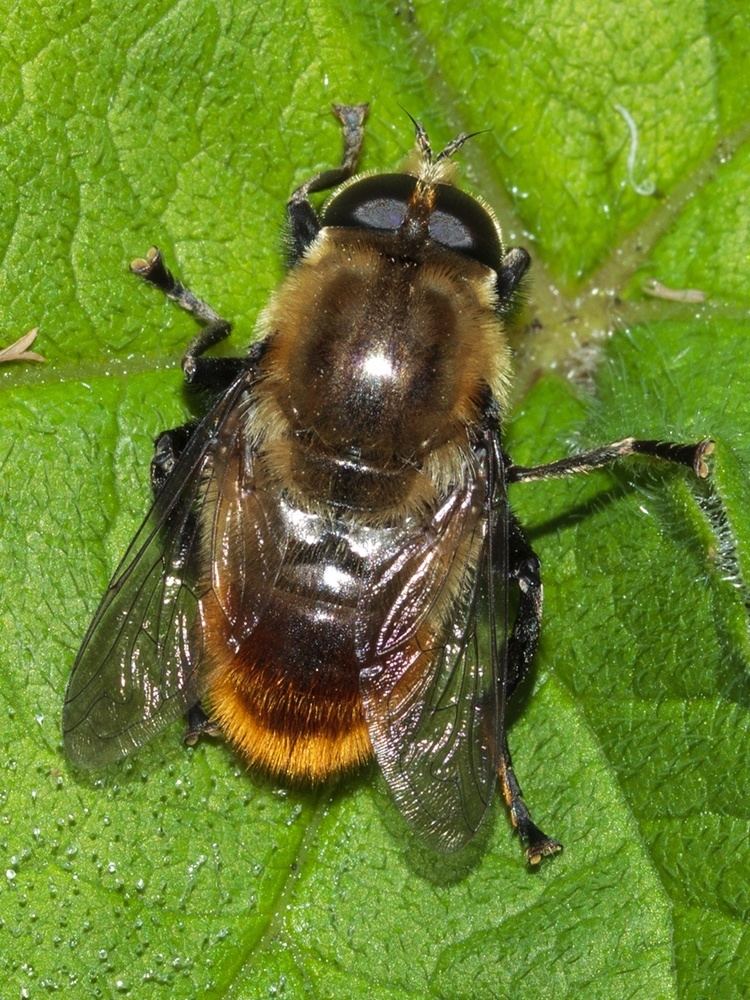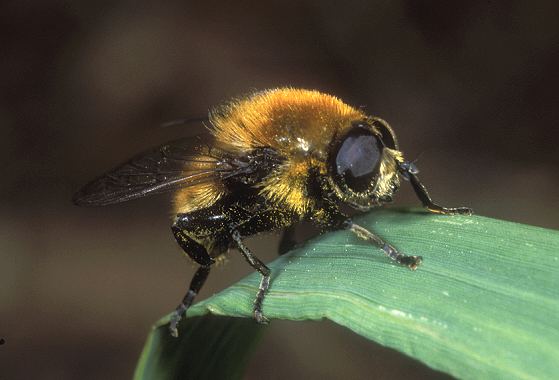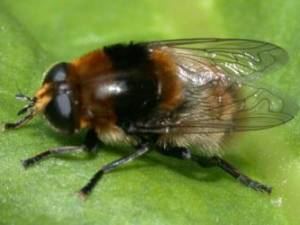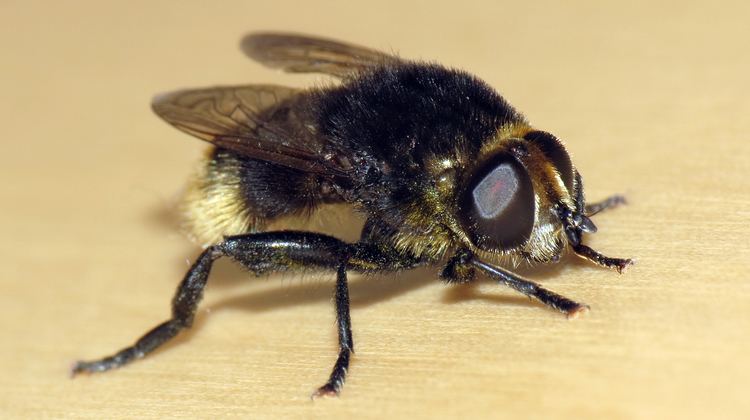Order Diptera Higher classification Merodon | Family Syrphidae Scientific name Merodon equestris Rank Species | |
 | ||
Similar Merodon, Hoverfly, Fly, Insect, Helophilus | ||
Greater bulb flies merodon equestris mating
Merodon equestris (Narcissus bulb fly, greater bulb fly, large bulb fly, large Narcissus fly) is a Holarctic species of hoverfly (Family Syrphidae). Like many other hoverflies it displays a colouration pattern similar to a stinging insect (a bumblebee in this case) as an evolutionary defense mechanism.Other syrphid bee mimics are Mallota, Arctophila, Criorhina, Pocota and Brachypalpus.Merodon species are distinguished from these by the very strong hind femora, which bear a large triangular projection on the underside near the tip.It flies in low vegetation while the other bumblebee mimics prefer higher vegetation layers.
Contents
- Greater bulb flies merodon equestris mating
- Narcissus fly merodon equestris oops
- Description
- Distribution
- Biology
- References

Narcissus fly merodon equestris oops
Description

A stout fly with a small head.The tergites are black, without the dust spots or blue-purple sheen of other Merodon species.The thorax and abdomen are hidden by dense, long, erect hairs of variable colouration.Tibia 3 of the male has 2 spurs at the apex. The larva is described and figured by Hodson (1932) and it is illustrated in colour by Rotheray (1993).
Distribution

Palearctic Fennoscandia South to Iberia and the Mediterranean basin.Ireland East through Europe into European Russia.Japan.Nearctic from British Columbia South to California.Introduced to New Zealand.
Biology

Habitat: Open areas in deciduous forest up into the subalpine zone but significantly synanthropic, occurring in suburban parks and gardens and on horticultural land. The adult flies low in April to July with a fast zig-zag flight, among ground vegetation frequently settling on bare ground. Adult M. equestris feed on pollen and nectar.Flowers visited include umbelliferae, Ajuga, Aster, Cirsium, Crepis, Eschscholzia californica, Hieracium, Knautia arvensis, Meconopsis cambrica, Papaver, Ranunculus, Rubus idaeus, Senecio,Lilium and Narcissus. The larva feeds internally in tissues of bulbs of Liliaceae and regarded as a minor pest of horticulture especially Narcissus. A bibliography of the literature on the biology of M.equestris is given by Barkemeyer (1994)

